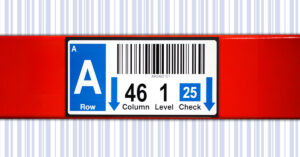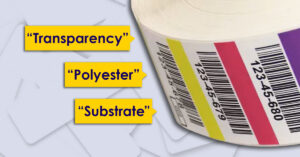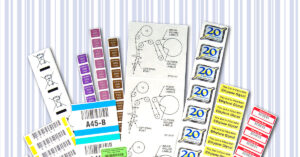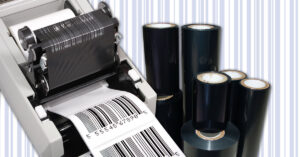Label converters and printers like Electronic Imaging Materials have a lot to consider as we strive for consistent label print quality. This is particularly challenging with film label products that are chemically inert and have non-porous surfaces with various levels of surface energy ranging from high surface energy (HSE) polyesters to low-surface-energy polypropylene and polyolefins.*
Unlike paper that is very absorbent, labels made of film materials—often called simply plastic and/or polyester—generally need a special finish to make ink properly spread out and bond. When we talk about “inks” this includes not only water-, solvent-, or UV-based flexographic inks, but also inkjet inks, thermal transfer printing ribbons and laser toner.
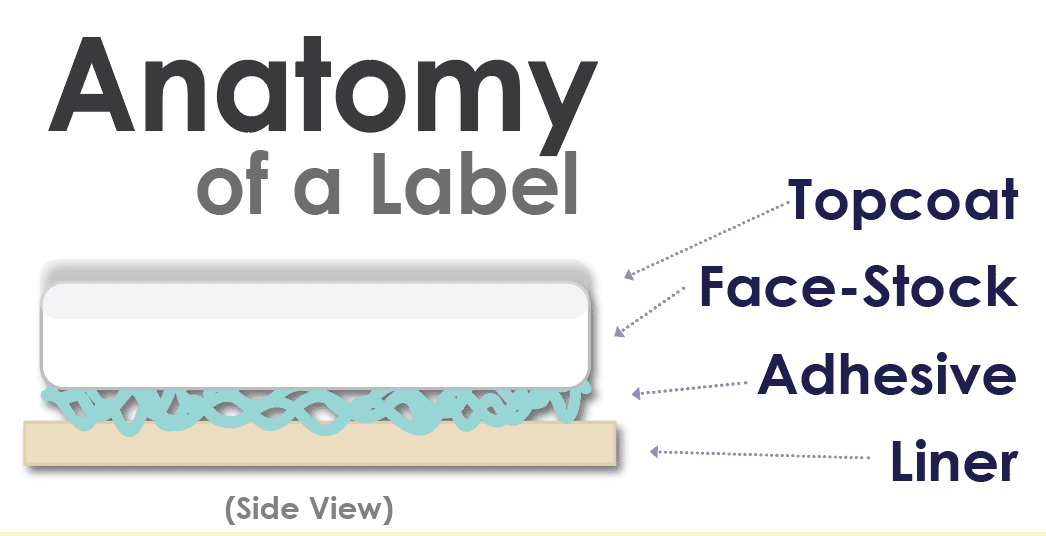
The two most common methods of face coating films are called “Topcoating” and “Corona Treating”: Using a Topcoat is like putting primer paint on a wall. It is a thin layer of varnish-like ink that helps inks bond to a film’s surface. Most commonly a topcoat is clear but some topcoats are colored to increase opacity. Topcoats come in matte, gloss or semi-gloss finishes to provide various levels of reflectance—something important to consider if you are scanning barcodes. The selection of topcoats is extensive and can be fine-tuned for specific films and printing methods; they are especially useful for variable printing with thermal transfer or laser printers.
Topcoats hold up to a wide range of environmental conditions including UV light, chemicals, and solvents, plus they help prevent smearing and flaking. Some topcoats are specifically engineered for their static dissipative qualities or to improve die cutting. Adding a topcoat at the time the label construction is put together is the most efficient method, but it can also be applied by a label converter like EIM.
A Corona Treatment is an electrical charge that increases the surface energy (dyne level) of the face stock and allows inks to “wet out” and spread smoothly. In the case of film labels, a dyne level of 40 or higher is needed for good print quality so if a film has a low dyne level, then it is especially important to treat it. Corona treating is generally less expensive than topcoating and is best done as a pre-treatment at the time the material is made. However, corona treatments are not as versatile and don’t improve print quality for certain types of print technologies. They also have a shorter print life because they start to fade; if a film goes through an additional press-applied corona treatment, the dyne level can be temporarily increased and the shelf life extended.
For those of you thinking, what if you did both… wouldn’t you have an even better print-receptive finish? The answer is no, because corona treatment can actually break down top coats and reduce ink bond.
You may also ask…are there any films that are NOT coated…and the answer is, yes. Some label materials were made for older, less challenging print technologies such as impact or dot matrix printing—before altering the label surface became an art form. Some materials are just designed to be “generic” and less expensive, but they do not guarantee good print quality. Other films could be used solely as over laminates and would not require a print treatment. When EIM is forced to use an uncoated material—where there may be limited material options to solve a particular label application, for instance—more than likely we will choose to add a topcoat or a corona treatment to improve print quality.
So remember…just like a person wears a topcoat to protect their clothes, a label “topcoat” (or corona treatment) will not only protect the label but also make it look better!
*It is interesting to see the correlation of label surface energy and plastic surface applications; there are similar challenges with both print surfaces and adhesives.
While our guide may be useful, nothing can replace speaking 1-on-1 with one of The Label Experts. We can offer assistance to answer your custom labeling needs. Before consulting with us, check out this page and our complementary Getting Started guide to help steer you in the right direction. The more info you know about your application, the quicker we can match you to the right product. We are excited to assist you and help come to a solution for your unique labeling needs.

